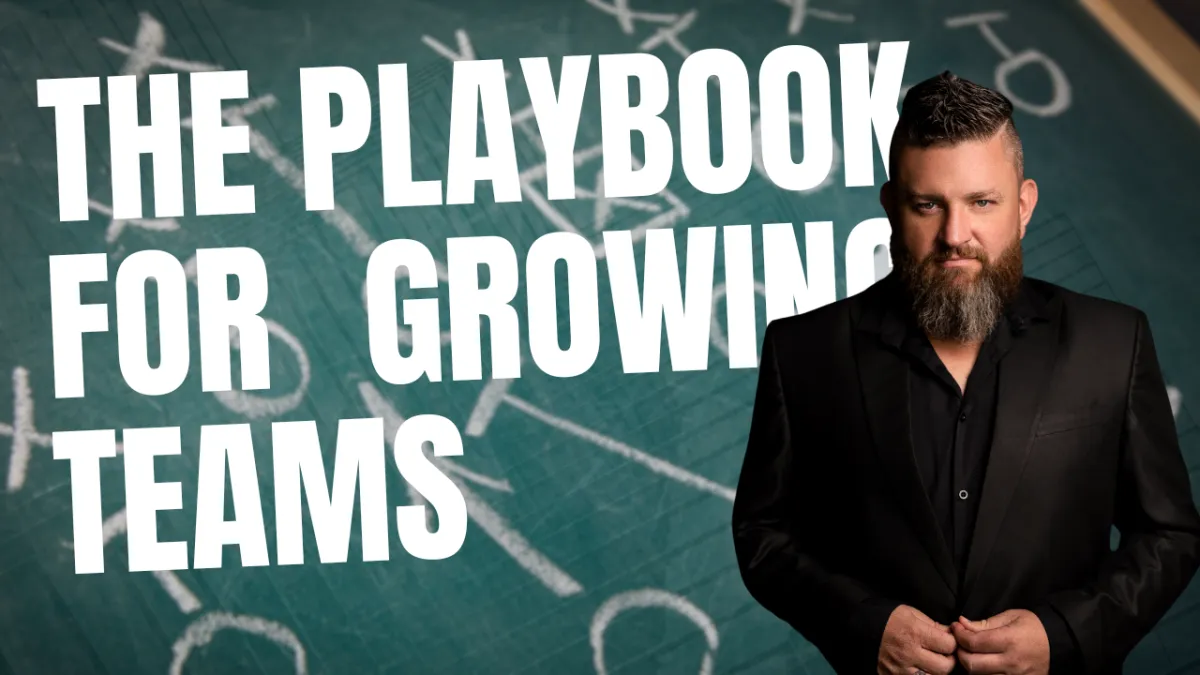
How to Scale Without Chaos: The Strategy Playbook for Growing Teams
Scaling a business is often misunderstood as a milestone. In truth, it’s a mindset and a minefield.
It’s easy to get excited about growth: more clients, more revenue, more team members. But scaling without structure is like building a skyscraper on sand. What starts as momentum can quickly become confusion, misalignment, and burnout.
I’ve coached enough founders, executives, and leadership teams to know this: growth is not the same as scale. Growth adds weight. Scale adds capability.
The difference? One will crush your systems. The other will stretch them. And unless you have the right strategic framework to support your team during growth, the very success you’ve worked for can start to unravel everything that once made your business great.
So how do you scale without the chaos?
Here’s the playbook I use with growing businesses, especially those transitioning from founder-led energy to team-driven performance.
Scaling Chaos: What It Looks Like When You Don’t Have a Plan
Before we talk about what works, let’s talk about what doesn’t. Here’s how you know your business is growing too fast or without the right foundation:
You’ve added team members, but decision-making is slower
Your clients are increasing, but so are complaints
You’re working harder, but not seeing clearer returns
Everyone’s busy, but no one’s truly accountable
You have big goals, but no roadmap for getting there
Sound familiar?
This is the tipping point where most leaders get stuck. They start throwing solutions at symptoms: hiring faster, launching tech, reshuffling roles. But the chaos doesn’t stop it multiplies.
What’s missing isn’t effort. It’s scalable strategy: the ability to grow intentionally, while protecting the clarity, culture, and consistency that made you successful in the first place.
Step 1: Create Strategic Clarity That Doesn’t Depend on You
Scaling starts with decoupling success from your personal presence. If you’re still the main decision-maker, the chief problem-solver, and the cultural anchor you’re not scaling. You’re sustaining.
The first thing I teach in any scaling intervention is this: document the thinking, not just the doing. If your knowledge, values, and decisions live in your head, you’ve created a bottleneck.
Start by asking:
What’s the vision and how is it communicated across every level?
What are our three core priorities for the next 90 days and who owns them?
What decisions do I still make that others could be equipped to own?
Scaling demands that you build systems that think like you, without needing you.
Step 2: Shift from Doers to Drivers
In early stages, everyone does a bit of everything. That’s survival mode. But once you're scaling, generalists can become a liability.
You need drivers people who own functions, make calls, and lead execution without needing step-by-step instructions.
That requires clarity around:
Role expectations
Decision rights
Accountability rhythms
It also means evolving your leadership. Stop rewarding responsiveness and start rewarding proactivity. Your next-level team should be able to predict, not just react.
A 2024 Deloitte study found that companies who train mid-level managers to lead outcomes (rather than follow process) scale 41% faster and retain talent longer.
Step 3: Scale Culture as Intentionally as You Scale Revenue
Most businesses don’t lose their edge during growth because of complexity. They lose it because the culture that made them special doesn’t scale.
When I work with second- and third-generation family businesses, this is the first point of failure. The founding values were never codified. Trust was assumed, not taught. The way people treated clients and solved problems lived in relationships, not systems.
As new hires flood in, the cultural experience dilutes. People stop asking, “Why do we do it this way?” and start asking, “Who’s to blame when it goes wrong?”
Scaling culture means:
Codifying values into decision frameworks
Training for behavior, not just skills
Rewarding alignment, not just performance
Culture is your immune system. Without it, every new hire becomes a risk. With it, every new hire becomes an amplifier.
Step 4: Simplify Before You Multiply
One of the biggest mistakes I see in scaling businesses? They try to grow everything at once.
More services. More products. More tools. More meetings.
But scaling is not about adding. It’s about simplifying what already works, then multiplying that.
If your delivery system is clunky, don’t build more pipelines. Refine the one you have. If your team communication is messy, don’t launch another platform. Tighten the rhythm.
Every 10X business I’ve worked with had one thing in common: they mastered simplicity before complexity. That’s what gave them room to grow without combusting.
Step 5: Align Metrics with Behavior Not Just Output
In the rush to scale, most businesses track the wrong things. They obsess over output: revenue, headcount, market share. But they ignore the leading indicators that drive long-term performance.
Resilient scaling leaders track behavior:
How fast are decisions being made at the right level?
Are teams solving problems or escalating them?
Are cross-functional projects improving or stalling?
If your KPIs only measure what’s already happened, you’re too late. Measure how your team operates under pressure, not just what it produces.
McKinsey’s 2024 Execution Index revealed that companies who adopt behavioral metrics during scaling are 35% more likely to reach sustainable profitability within 24 months.
Scaling Is a Mindset, Not Just a Milestone
Here’s the truth most strategy decks don’t tell you:
Scaling isn’t the reward for business success. It’s the test of your foundation.
Can your systems carry more weight without breaking?
Can your culture stay strong as new people join?
Can your team lead even when you step out?
If the answer is no, the problem isn’t the opportunity. It’s the infrastructure.
So here’s what I’ll leave you with:
Before you chase scale, build structure.
Before you hire fast, train for alignment.
Before you expand, simplify.
Because scaling isn’t just about how fast you grow.
It’s about how long you can keep growing without losing what made you excellent to begin with.
